1 What is health and technology?
The meaning of health
There are three sides to health. This is called the health triangle.
If any one of these is not right then you will feel unhealthy.
Healthy Lifestyles
A healthy lifestyle would include:
Physiological measurements as indicators of health
Taking certain physiological measurements can give an indication of the health of the person.
Some measurements would include:
|
|
These measurements can be taken using high tech and low tech approaches.
Physiological Measurement |
High tech approach |
Low tech approach |
Temperature |
Thermocouple |
Thermometer |
Body fat |
Digital body fat sensor |
Skin fold calipers |
Blood pressure |
|
Stethoscope and |
Heart (pulse)rate |
Pulsometer |
|
Comparison of high tech and low tech measurements
Physiological Measurement |
Advantage |
Disadvantage |
High tech approach |
Increased accuracy |
Not widely available |
Low tech approach |
In expensive |
Less accurate |
2. A Healthy Heart
The heart and circulatory system
The heart is made of muscle and pumps blood around the body. When the heart muscle contracts it pumps blood through vessels around the body. There are valves in your heart that make sure that the blood always flows in the right direction. It is the closing of these valves that gives the sound of the heart beat which can be heard when using a stethoscope.
Diagram of a human heart
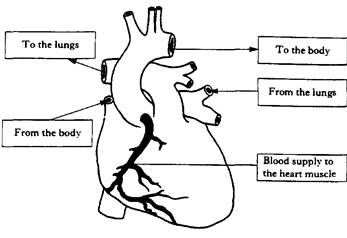
There are three kinds of blood vessels: arteries, capillaries and veins. Arteries carry blood away from the heart, they divide again and again and eventually form very tiny blood vessels called capillaries. Capillaries allow nutrients and oxygen to pass from the blood to the tissues and allow carbon dioxide and other wastes to leave tissues. The capillaries join up with one another to form large vessels called veins. Veins return blood to the heart.
Diagrams of artery, capillary and vein
from heart |
ARTERY |
|
CAPILLARY |
|
VEIN |
To heart |
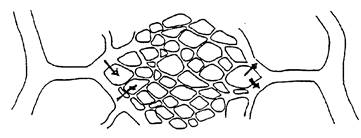
Diagram showing blood flow around the body
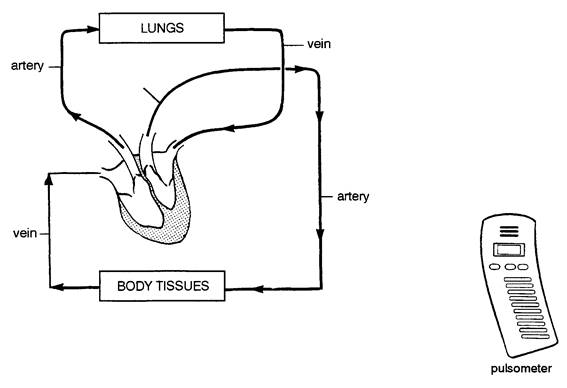
Pulse rate as a health indicator
Each time the heart beats it pushes blood into our arteries and make them swell out a little. The pressure wave is transmitted to all parts of the body and can be detected as a pulse.
Pulse rates are expressed as beats per minute and give a direct measure of the speed at which your heart is beating. The pulse can be measured using a pulsometer or heart rate monitor.
We can find out how fit we are by measuring our resting pulse rate. This value gives a measure of the efficiency of the heart and circulation.
Normal range of pulse rate is between 60 - 70 beats per minute.
A high resting pulse rate means that your heart is having to work hard just to circulate blood around the body and can lead to heart disease.
A low resting pulse rate and a short recovery time (i.e. the time for the pulse rate to return to normal after exercise) can indicate fitness.
The resting pulse rate can be reduced by taking regular exercise.
Blood pressure under different conditions
Blood pressure is the pressure of our blood in our arteries. This pressure is caused by the pumping action of the heart.
Blood pressure can be measured using a sphygmomanometer.
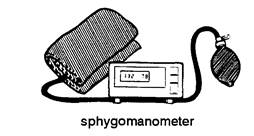
Our blood pressure changes significantly depending on our emotional and physical condition, where the arm is placed during the measurement and how and where the cuff is fastened.
Blood pressure is taken as two readings:
The blood pressure readings are measured in millimetres of mercury (mmHg).
A typical blood pressure of 110 (first reading), 75 (second reading) is written as 110/75.
Any reading up to 140/90 is considered to be within the normal range.
High blood pressure can be caused by a number of factors:
capacity of red blood cells and nicotine narrows blood vessels
High blood pressure increases with age and can lead to a heart attack or stroke.
Low blood pressure is uncommon but can lead to fainting or can indicate heart failure.
Blood tests and blood counts
Often it is possible to analyse our blood to give us an indication of the state of our health. This analysis will also be able detect and monitor various illness.
Blood tests and cell counts can be used to detect:
3. Healthy Lungs
The lungs and breathing
Our lungs are found inside our rib cage and they are situated on either side of the heart. The lungs are spongy pink in colour and are made up of millions of air sacs. The lungs take in oxygen into the blood and remove carbon dioxide from the blood to the air.
Exercise improves the efficiency of gas exchange in the lungs. A fit person’s breathing rate will be slower than that of an unfit person. A fit person will also have a shorter recovery time i.e. it will take less time for their breathing rate to return to normal after exercise than it will for an unfit person.
Diagram of the human respiratory system
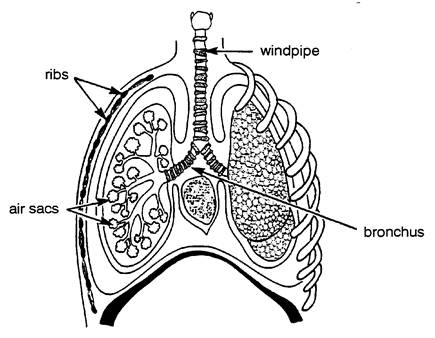
The physiological measurements of the lungs
The measurement of vital capacity, tidal volume and peak flow allow us to measure the state of the health of our lungs.
Vital capacity
The vital capacity is the maximum volume of air we can breathe out after we have taken a deep breath. The vital capacity of a 16-year-old female is about 2800cm3 and for a 16-year old male it is about 4000cm3.
Tidal volume
The tidal volume is the normal volume of air breathed in or out from our lungs. This is usually about one tenth of the normal vital capacity.
Peak flow
The peak flow is a measure of the maximum rate at which air can be forced from the lungs. The peak flow rate can be used as a measurement of health e.g. it can be used in the diagnosis and management of asthma.
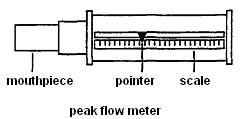
The vital capacity, tidal volume and peak flow of a person depends on the age, sex, size and
fitness of the person e.g.
Health risks and effects of smoking
Smoking increases the risk of cancer and heart disease.
Carbon monoxide is a poisonous gas found in cigarette smoke. This gas reduces the oxygen carrying capacity of the blood.
4. A Healthy Body
The importance of diet and energy balance
The food and drink we eat everyday makes up our diet.
A healthy diet contains a balance of all the important nutrients:
Energy giving nutrients are:
Body building nutrients are:
Protective nutrients are:
About half the population in Britain are overweight and about one-fifth of them are obese. Someone who is obese is more likely to suffer from diseases such as coronary heart disease or diabetes.
There are many reasons why people are overweight but scientists are convinced that a person’s diet or eating habits is one of the many factors which determines a person’s weight.
The relationship between fat and health
The amount of body fat you have can indicate the health of a person.
Being overweight can lead to an increased risk of:
Being underweight can indicate illnesses such as:
Body fat can be measured using calipers.

A skinfold caliper is a device which measures the thickness of a fold of skin with its underlying layer of fat. By doing this at key locations; shown by research to be representative of the total amount of fat on the body, it is possible to estimate the total percentage body fat of a person.
The body should have about 20% fat.
The normal ranges of body fat are shown in the table below.
Age Range |
Ideal % Body Fat |
|
Females |
Males |
|
up to 30 |
14-21 |
9-15 |
30-50 |
15-23 |
11-17 |
over 50 |
16-25 |
12-19 |
The relationship between body temperature and health
Students must know how to measure temperature.
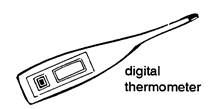
Our body temperature needs to be kept at a constant temperature between 36.0 — 37.0°C. Our body temperature can alter slightly depending on where it is measured, the time and day and in women, the time of the month (menstrual cycle).
A body temperature above 40°C can lead to heatstroke or indicate fever as a result of fighting infection.
A body temperature below 35°C indicates hypothermia. If the temperature of the body falls below 30°C, death can result. Babies and the elderly are particularly at risk.
Exercise and the health of muscles
Most of the energy obtained from food is used for movement. AU movement is brought about by the action of muscles.
Muscles can only contract. When they contract the parts of the body which they are attached to move. After contraction, muscles relax and return to their original shape. Muscles must work in pairs.
Diagram of muscle pairs in the arm:
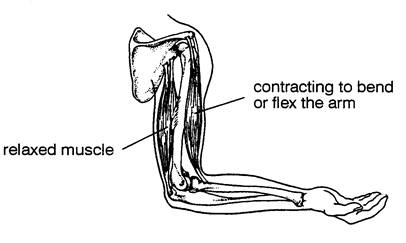
Muscle strength and endurance are good ways of measuring someone’s physical fitness, but not necessarily their general state of health.
The size, strength, and efficiency of muscles can be improved through regular exercise. Muscles respond to regular exercise by growing larger and developing a better blood supply.
One way to improve the strength of our muscles is to exercise them regularly.
Muscle mass decreases if muscles are not exercised regularly. Muscle fatigue (tiredness) can be relieved by relaxation.
Reaction time as an indicator of health
Reaction time is the time taken for a person to respond to a certain stimulus.
Reaction time is a good indicator of health.
It can be measured using a dropped ruler or electronic timer.
A slow reaction time can indicate diabetes, brain or nervous disorders or arterial disease.
Our reaction time can be affected by:
Health risks and the effects of alcohol
The effects of drinking small amounts of alcohol occasionally are short term and will not harm your body. However, alcohol is a depressant drug, and small amounts can slow down processes in your brain.
In the long term, drinking alcohol can cause:
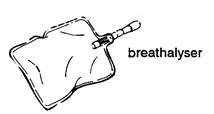
Source: http://www.elginacademy.co.uk/wp-content/uploads/2011/01/Int_1_Health__Technology_summary_notes.doc
Web site to visit: http://www.elginacademy.co.uk
Author of the text: not indicated on the source document of the above text
If you are the author of the text above and you not agree to share your knowledge for teaching, research, scholarship (for fair use as indicated in the United States copyrigh low) please send us an e-mail and we will remove your text quickly. Fair use is a limitation and exception to the exclusive right granted by copyright law to the author of a creative work. In United States copyright law, fair use is a doctrine that permits limited use of copyrighted material without acquiring permission from the rights holders. Examples of fair use include commentary, search engines, criticism, news reporting, research, teaching, library archiving and scholarship. It provides for the legal, unlicensed citation or incorporation of copyrighted material in another author's work under a four-factor balancing test. (source: http://en.wikipedia.org/wiki/Fair_use)
The information of medicine and health contained in the site are of a general nature and purpose which is purely informative and for this reason may not replace in any case, the council of a doctor or a qualified entity legally to the profession.
The following texts are the property of their respective authors and we thank them for giving us the opportunity to share for free to students, teachers and users of the Web their texts will used only for illustrative educational and scientific purposes only.
All the information in our site are given for nonprofit educational purposes
The information of medicine and health contained in the site are of a general nature and purpose which is purely informative and for this reason may not replace in any case, the council of a doctor or a qualified entity legally to the profession.
www.riassuntini.com